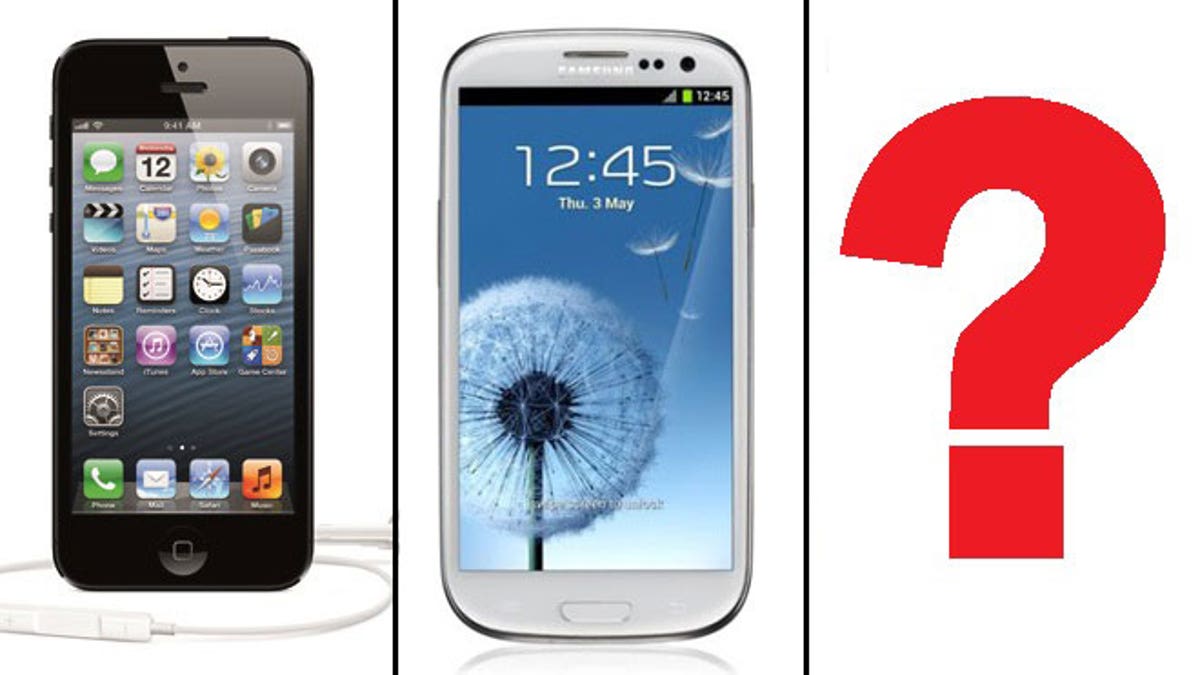
The end of the smartphone is inevitable ... but what could possibly replace it?
The end of the smartphone era is coming.
Though sales are still surging for iPhones, Androids and even Blackberrys, the writing is on the wall: With a market penetration over 50 percent in the U.S., something will eventually draw our interests away from those ubiquitous black rectangles. But what?
“The way we interact with our phones will change drastically,” said Tim Stevens, editor of Engadget, “Eventually, I see us leaving them in our pockets and instead interacting with other devices that communicate with our phones.”
Stevens calls this a personal area network, where our phones are really just devices that contain storage and provide an Internet connection to other wearable technology. Things like the Fitbit, Jawbone, Nike Fuelband and Pebble smart watch -- all of which are available now.
In that sense, the future has already arrived — albeit partially. “These are incredibly exciting devices that are just the tip of the iceberg,” Ben Bajarin, technology analyst at Creative Strategies, told FoxNews.com. “It may not be one device that replaces the smartphone, but rather many.”
'First [computers] were in big rooms, then they sat on desktops ... now they're in our palms. Next they'll be on our faces.'
- 20 must-have apps for your Android phone
- Look who’s stalking: 10 creepiest apps for phones, Facebook, more
- 15 devices your iPhone replaces
- Yale prof names ancient lizard after Obama
- Twitter snaps back in Instagram photo war
- Math, science scores for some US students improving, but lag behind many in Asia, Europe
- What would a US Apple factory mean for American jobs?
Others suggest that mini tablets will further erode the influence of smartphones, thanks to larger, more practical screens. But since modern tablets and smartphones are largely the same (i.e. touch screens with apps), this too is simply an evolutionary step.
You want revolution instead? The most radical and wild-eyed smartphone replacement technology comes right out of Star Trek: computerized glasses.
Google was the first to demo a prototype this summer with the ambitious announcement of Project Glass. The promotional video for the prototype glasses shows the well-rehearsed, highly hypothetical, very dramatized case of a man walking through New York and using overlaid graphics, data, and voice commands to interact with his environment and personal contacts.
The technology is called augmented reality. And Google says the glasses will be available to the public by 2014 without detailing specifics.
But augmented reality researchers say the video is misleading; the actual technology will look nothing like the video suggests.
“You couldn’t do augmented reality with a display like this,” said one Georgia Tech researcher earlier this year in an interview with Wired Magazine. "The small screen seen in the photos cannot give the experience the video is showing," said another.
Besides, Google Glass won’t be able to overlay data on top of your physical world view, Business Insider reported last month. But it will be voice-enabled and should be able to present useful information without having to reach for a phone and without impeding the immediate line of sight of the wearer.
Regardless of what the final release might look like, those who have tried it say it is real (i.e. not vaporware). Furthermore, recent patents filed by Apple and Microsoft show that they too may be investing heavily in smart glasses.
While it may be difficult to envision a future where all of us wear computerized glasses, the idea is consistent with the evolution of computers. “First they were in big rooms, then they sat on desktops, then they sat on our laps, and now they're in our palms,” wrote Nicholas Carlson of Business Insider. “Next they'll be on our faces.”
In that sense, smart glasses are a logical next step in personal computing. “Wearable computing will become a reality,” predicts Bajarin. Stevens agrees: “Some sort of wearable computing is definitely a given.”
But what about technology still unseen? What’s the chance someone will envision a smartphone replacement that not one has thought of yet?
That doesn’t happen, says Stevens — at least with hardware. “Overnight displacement by unsuspecting technology is much more common in software,” he told FoxNews.com, noting that even incredibly young but popular devices like the iPad were built using lessons learned in the early 2000s with failed Tablet PCs.
In other words, if we haven’t already seen a prototype of some sort, it’s unlikely to miraculously appear. But the possibilities excite nonetheless.
“I look forward to sending and listening to emails without taking my phone out of my pocket -- even without taking my eyes off the road while driving,” Stevens said. “These things are almost all possible now, and in a few years will become common.”
The only question that remains: If Brad Pitt is unable to wear a Bluetooth headset — let alone ridiculous-looking smart glasses — what hope is there for the rest of us?




















